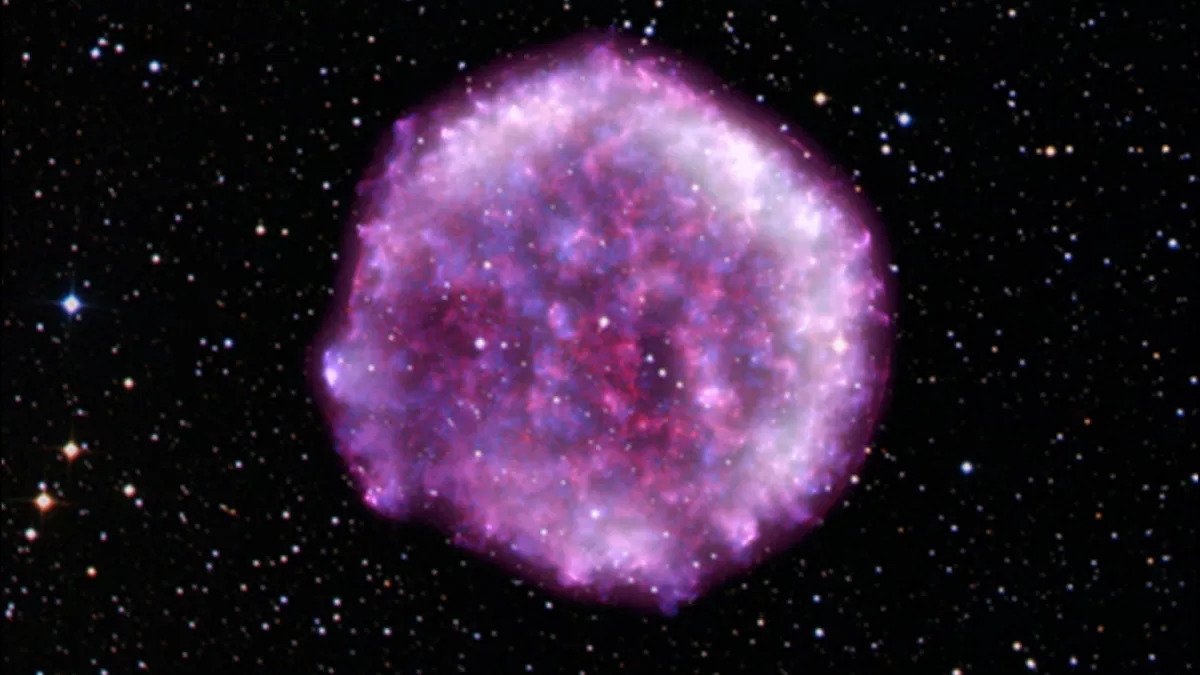Scientists have studied the Tycho supernova remnant using the IXPE X-ray space telescope. They found that chaotically entangled magnetic fields are responsible for the acceleration of high-energy electrons in it.

Remnant of the Tycho supernova
The Tycho supernova remnant is a small spherical nebula with a neutron star in the center. It is ionized and therefore emits in a number of ranges, including X-ray. It got its name in honor of the Danish astronomer Tycho Brahe, who in 1572 observed the supernova that gave birth to it.
According to modern concepts, then the object was a close binary system, which consisted of a white dwarf and a yellow star. A significant amount of matter flowed from the latter to the central object. As a result, its mass exceeded the Chandrasekhar limit, and it exploded, throwing a large amount of plasma into the air. And it turned into a neutron star.
One of the biggest mysteries presented to scientists by the Tycho supernova remnant is connected precisely with high-energy particles of the X-ray spectrum. Back in 2011, an image obtained by the Chandra orbiting telescope showed a pattern of stripes on the surface of the nebula. Back then, scientists suggested that this was due to magnetic fields that captured and accelerated electrons.
IXPE Satellite Research
Until now, instruments operating in the X-ray range have lacked sensitivity in order to properly examine what is happening inside the nebula. However, the IXPE launched in space last winter works precisely in polarized X-ray light. Therefore, it can clearly see the magnetic fields penetrating the nebula.
IXPE generally confirmed the results obtained by Chandra. X-ray radiation is indeed predominantly generated in a thin rim at the edge of the nebula. In these places, the magnetic field lines are strongly distorted and the electrons that move perpendicular to them emit X-rays.
In general, these electrons lose speed quite quickly, so the radiation occurs only in a very narrow zone. In general, the magnetic fields of the nebula turned out to be quite turbulent. But they are still not so chaotic that the polarization is completely lost.
According to the researchers, it is 9 percent in the supernova remnant and 12 percent on its rim. And this is significantly more than in previous studies of other supernova remnants. The reasons for this can be found out later.
According to www.space.com
Follow us on Twitter to get the most interesting space news in time
https://twitter.com/ust_magazine

